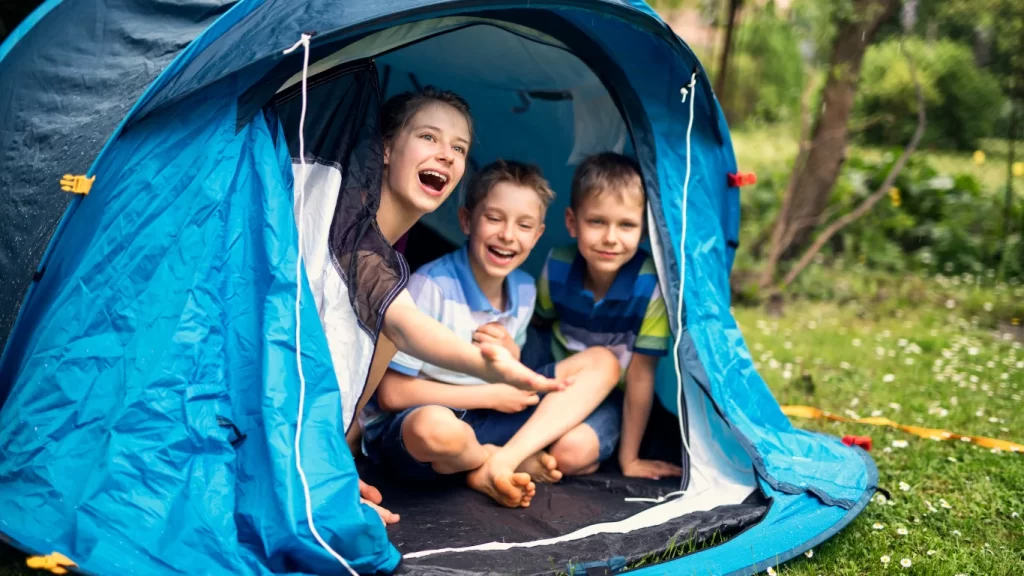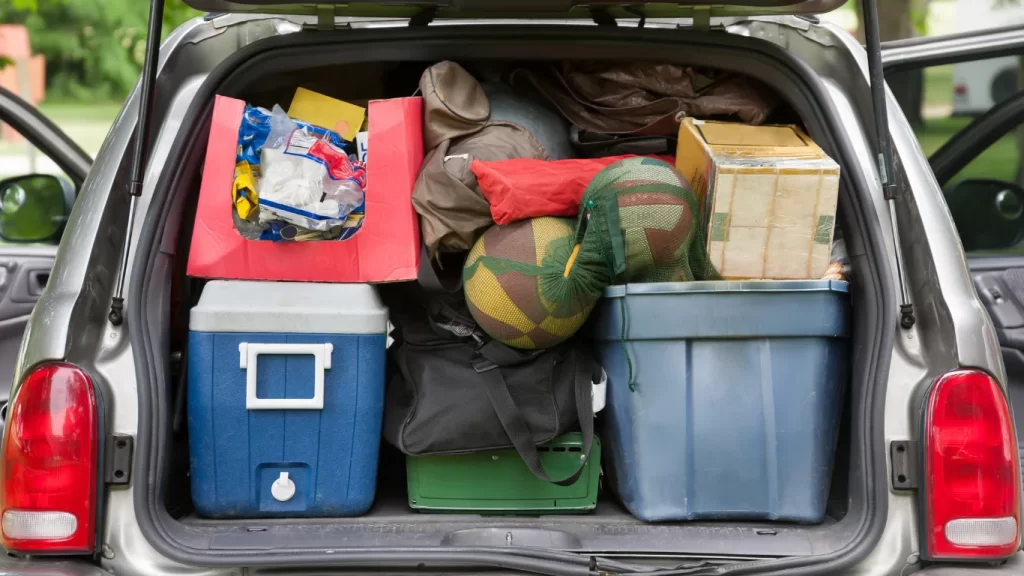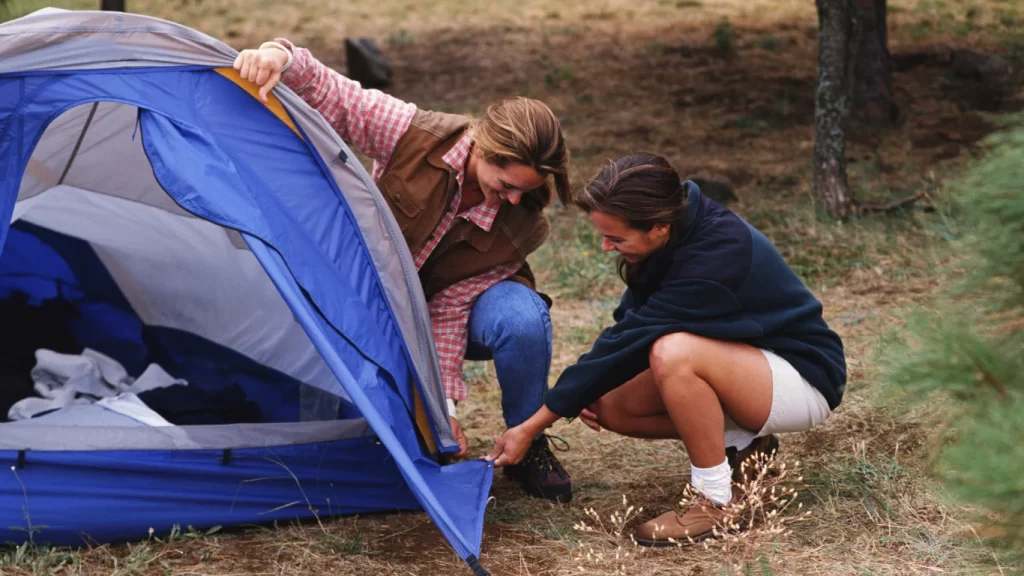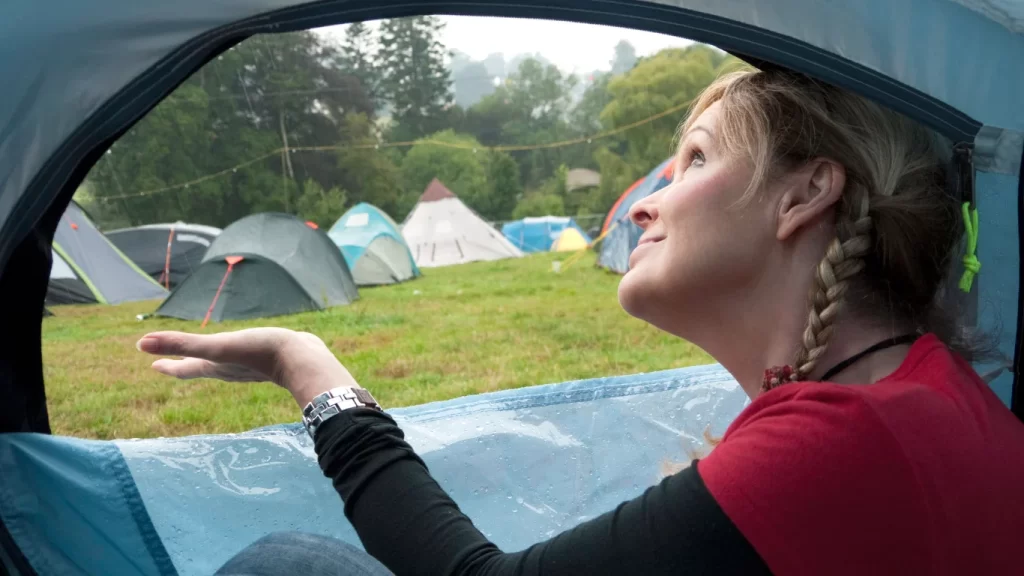Are you planning a camping trip? Here are some helpful weatherproof camping tips to ensure you’re prepared for any type of weather. Camping is a great way to connect with nature, but it can also bring unexpected challenges, especially with the weather. Being ready for sudden changes in the weather can make all the difference in ensuring a safe and enjoyable outdoor experience.
This article covers a range of strategies for adapting to weather changes while camping, including dealing with unpredictable weather and packing essentials. We’ll talk about choosing the right gear for wet weather, staying cool in the summer heat, handling storms, and preparing for cold weather. You’ll also find practical advice on staying dry, managing windy conditions, and selecting the best weatherproof gear.
By providing these tips, our goal is to guide you through the process of being prepared for any type of weather while camping, from the planning stage to enjoying a safe and fun outdoor experience.
Weatherproof camping tips
Preparing for Rain

When anticipating rain during a camping trip, ensuring your tent is fully waterproof is crucial. Here are vital steps to prepare:
- Waterproof Tent Setup: Begin by selecting a tent with a high hydrostatic head rating, ideally 1500mm or more, to handle most rain conditions. Check that the tent’s seams are sealed; manufacturers often use transparent tape applied with heat to cover stitches.
- Use of Tarpaulin: Enhance your shelter by setting up a tarp. Tarps provide additional protection against rain and can be used to cover the tent, creating an extra layer of moisture defence. Ensure the tarp is securely anchored to withstand wind.
- Check Tent Seams and Poles: Inspect the tent seams for signs of wear or leakage. Apply seam sealer if necessary, choosing the correct type for your tent’s fabric. Also, verify the structural integrity of the poles and ensure they are sturdy enough to support the tent under the weight of rainwater.
By following these steps, campers can significantly improve their shelter’s resistance to rain, ensuring a dry and comfortable camping experience.
Packing Smartly

When packing for a weatherproof camping trip, it is essential to consider not only what you pack but also how you pack it. Here are three key considerations:
- Layered Clothing: When packing your clothing, it’s important to use layers to be ready for changing weather. Start with a moisture-wicking base layer, add an insulating mid-layer, and then finish with a waterproof and windproof outer layer. This system lets you adjust your clothing based on the temperature and your activity level, making sure you stay comfortable and protected from the elements.
- Extra Pegs and Mallets: Always bring extra tent pegs and a mallet. Conditions at your campsite may vary, and having additional pegs can be a lifesaver in harsh soil conditions. A mallet will help secure your pegs firmly into the ground, preventing your tent from being compromised in windy or stormy weather.
- Bring Large Freezer Bags: Large freezer bags are versatile and essential for keeping food fresh and dry. They can also be used to organize small items, protect electronics, and store waste, helping to maintain cleanliness and order at your campsite.
By focusing on these aspects, you can always make sure a smoother and more enjoyable camping experience, regardless of the weather conditions you encounter.
Setting Up Camp

When setting up camp, selecting the right location is crucial for ensuring safety and comfort. Here are essential steps to follow:
Choose Higher Ground
Always opt for elevated areas to set up your tent and living space. Higher ground provides better drainage and minimizes the risk of flooding, especially during unexpected heavy rainfall. Look for areas that show signs of good water runoff and avoid depressions where water could accumulate.
Avoid Flood-prone Areas
Steer clear of locations near water bodies or in low-lying areas such as valleys and canyons, which are susceptible to flash floods. Campsites should be at least 200 feet away from streams or rivers to adhere to safety guidelines and reduce the risk of your site being submerged during sudden water level rises.
Put Up a Fly Shelter
Setting up a tarp or fly shelter can provide essential protection from the elements. Begin by locating a central anchor point, such as a rope tied between two trees. Drape the tarp over this rope and secure it using grommets and carabiners for stability. Adjust the tarp to ensure it covers the tent adequately, using additional poles and guy lines to maintain tension and prevent water pooling. This setup not only shields you from rain but also creates a communal area for activities like cooking and socializing away from the tent.
By following these guidelines, campers can ensure their campsite remains dry, secure, and comfortable, regardless of the weather conditions.
Surviving the Storm

To effectively survive a storm while camping, meticulous attention to your tent setup and maintenance is crucial. Here are essential strategies to ensure safety and comfort:
- Adjust Guy Ropes Regularly: To maintain tent stability during strong winds, it’s vital to check and adjust the tension of your guy ropes regularly. Ensuring they are firmly anchored can prevent the tent from collapsing or shifting. Utilize non-stretch guy lines for optimal support, as they provide crucial structural integrity by distributing stress evenly across the tent.
- Avoid Touching Tent Walls: Keep sleeping bags and other equipment from contacting the tent walls. This prevents water from wicking inside the tent, which can occur when materials touch a wet tent surface. If the tent fabric is already saturated or if condensation has formed, touching it can cause leaking, making the interior damp.
- Move Wet Gear to a Dry Area: Organize your space efficiently by moving wet gear to designated dry areas. Using a vestibule or a separate tarp-covered area can protect your belongings from moisture and help maintain a dry living space. This strategy is crucial for keeping essential items like clothing and electronic devices safe from water damage.
By implementing these practices, campers can significantly enhance their ability to withstand adverse weather, ensuring a more secure and enjoyable outdoor experience.
Conclusion
We’ve discussed various strategies for camping in different weather conditions. We emphasized the importance of choosing the right gear, setting up a safe campsite, and being prepared for unpredictable weather. As you go camping, remember that each trip is a chance to learn and connect with nature. Being well-prepared is important for safety, comfort, and environmental responsibility. Let’s carry the wisdom of preparation and the spirit of adventure on every camping journey, ensuring a safe and enjoyable experience deeply connected to the natural world.
FAQs
What should I pack for camping in rainy weather?
When preparing for a camping trip where rain is expected, it’s essential to pack items that will keep you dry and comfortable. Make sure to include plastic or dry bags, a waterproof jacket, waterproof trousers, water-resistant boots or wellies, quick-dry T-shirts, quick-dry towels, extra socks, and a spare poncho.
How can I prevent my tent from flooding during heavy rain?
To protect your tent from flooding, especially from moisture coming up from the ground, place a heavy-duty tarp underneath your tent. Make sure the tarp does not extend beyond the tent’s edges to prevent water from collecting and seeping under the tent.
What steps can I take to make my tent stormproof?
To enhance your tent’s resistance against storm conditions, cover it entirely with a durable tarp. This provides significant additional waterproofing. If your tent has relatively weak poles, consider using extra steel tent poles to support the tarp, ensuring it doesn’t exert too much pressure on your tent’s original poles.
How can I stay warm while camping in icy conditions?
Staying warm during winter camping involves several strategies:
Dress in multiple layers to adjust your insulation as needed.
Change out of sweaty clothes to prevent cooling; bring an extra base layer.
Use two sleeping pads for better insulation from the ground.
Combine a sleeping bag with a quilt for extra warmth.
Place a hot water bottle near your core area instead of at your feet to maintain core body temperature.
Sleep wearing a balaclava to keep your head warm.
Vent your tent to avoid condensation buildup.
Consume plenty of food and drinks to help your body generate heat.





